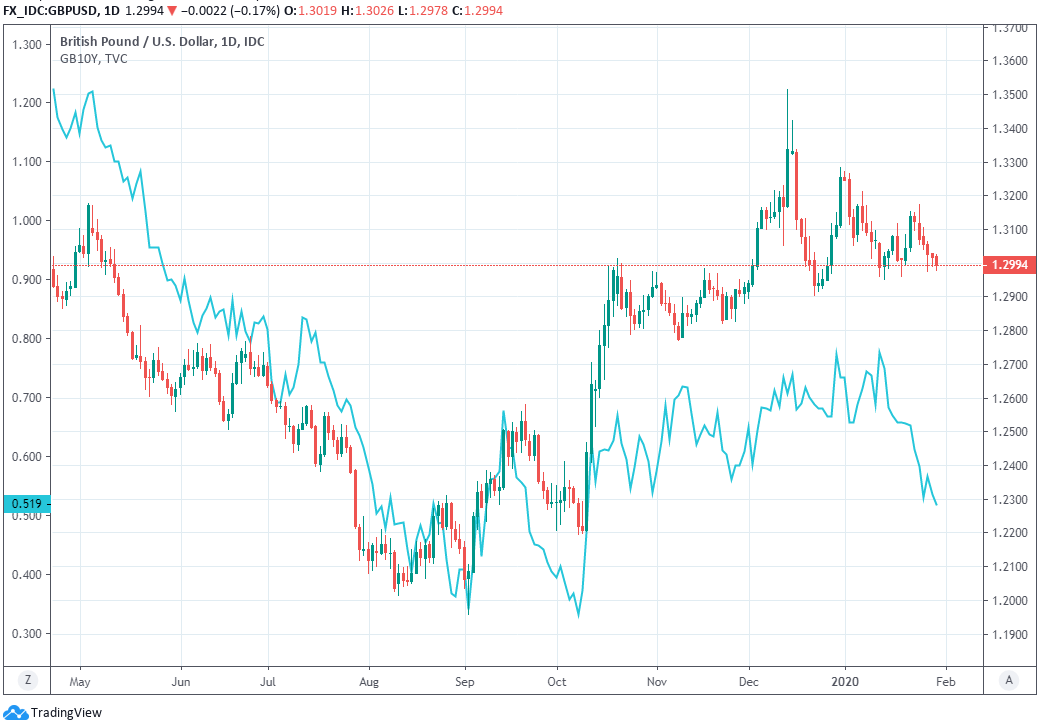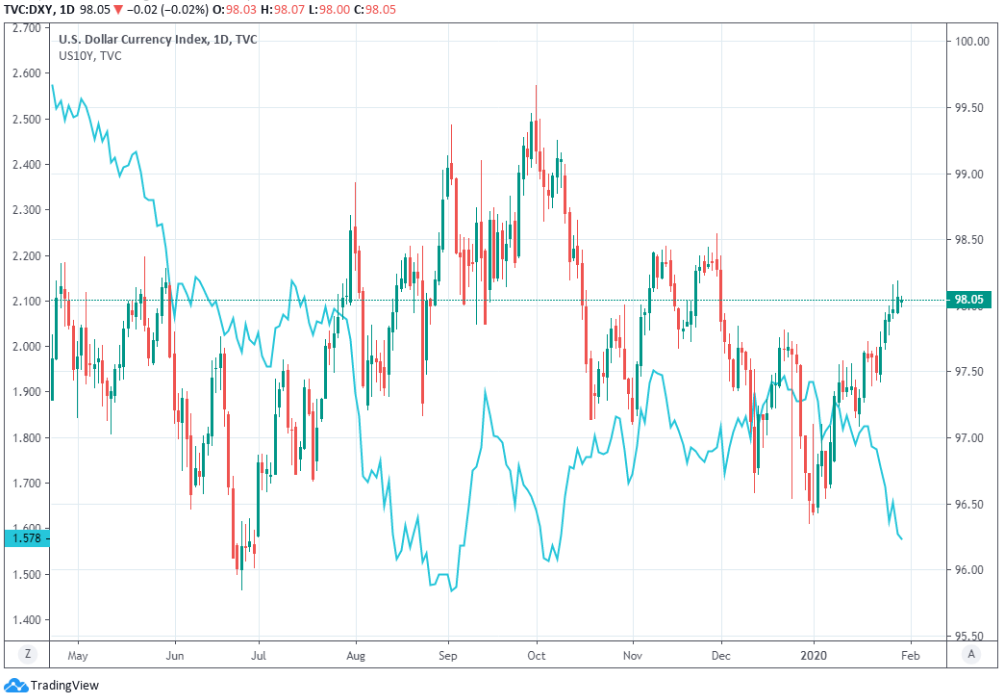U.S. Dollar Wins after Fed Stays Course and Coronavirus Spreads
- Written by: James Skinner
-
- Fed signals steady rates ahead, reiterates earlier forecasts.
- Helps lift USD amid rising safe-haven demand, risk-aversion.
- But market, ING, still see at least one 2020 rate cut coming.
- Coronavirus compressing yields and lifting all safe-havens.
- Set to remain important driver of sentiment and price action.

Image © Federal Reserve
- GBP/USD Spot rate: 1.2982, down 0.30% today
- Indicative bank rates for transfers: 1.2658-1.2749
- Transfer specialist indicative rates: 1.2818-1.2896 >> Get your quote now
The Dollar rose in a risk-averse market Thursday after the Federal Reserve (Fed) signalled steady interest rates ahead and as investors eschewed risk assets in response to the continued spread of a new coronavirus.
Chairman Jerome Powell said Wednesday that a 1.75% cash rate remains "appropriate" for the economy before reiterating that it woud require a "material reassessment of our outlook" for it to move in either direction.
"Officials feel that the three 25bp rate cuts implemented in the second half of last year, coupled with the phase one trade deal between the US and China, have stabilized the situation," says James Knightley, chief international economist at ING. "Nonetheless, growth risks remain skewed to the downside with a rate cut remaining our call for 2020."

Above: Dollar performance against major rivals Thursday. Source: Pound Sterling Live.
Powell maintained his earlier assertion the economy will likely deliver GDP growth of around 2% in 2020, returning-to-target inflation and full employment. And he cited sluggish growth" abroad as well as trade tensions for recent falls in U.S. business investment and weakness in manufacturing.
In other words, the Dollar is set to retain the joint-highest interest rate among major currencies for a while yet, not to mention the safe-haven status that's lifted the greenback notably in the last week as the new coronavirus claimed increasing numbers of victims in China and spread to at least 18 countries.
"The Fed is keen to get the core PCE deflator above 2% and reinforce the symmetry of its mandate. Whether that was a factor in yields falling when the Coronavirus death toll is rising and risk sentiment deteriorating, is hard to tell. Either way, Asian equity indices are lower, as are bond yields. The yen and Swiss franc are top currencies and gold prices are higher," says Kit Juckes, chief FX strategist at Societe Generale.

Above: Pound-to-Dollar rate declines in January with 10-year GBP government bond yield (blue line, left axis).
The Fed cut rates three times last year in order to defend the U.S. economy against a global slowdown induced by the U.S.-China trade war and the bank's own earlier rate hikes, although markets are betting that it delivers at least one further cut in 2020. And Powell made clear Wednesday that he's unhappy with consistent below-target inflation and hinted the bank could now ignore temporary moves above the target in the hope that inflation will eventually spend more time around the 2% target as a result.
However, and much like the 2019 rate cuts, the guidance on inflation and the outlook for rates has done little more than constrain the Dollar on its upward path. This is in large part because safe-haven demand is rising with concerns over the coronavirus which is laying claim to increasing numbers in China, leading the public to shut themselves away indoors and threatening to bring the world's second largest economy to a standstill.
"The threat that the coronavirus outbreak poses in an environment of already subdued global growth underlines the potential for medium-term US economic weakness. So far, the market and economic impact appears limited with the travel and airline industries the most impacted. Nonetheless, the US yield curve, which is flirting with inversion once again, highlights broader market fears that the virus and its human and economic threat could spread. The more that it does the more likely it starts to alter consumer and corporate behavior, thereby prompting policy action to mitigate the dangers," Knightley says.

Above: Dollar Index rise in January as 10-year U.S. government bond yield falls (blue line, left axis).
Coronavirus has spread to all 31 of China's provinces, with the National Health Commission (NHC) saying Thursday that as of 24:00 on 29 January it was aware of 7,711 confirmed cases of the super-pneumonia-like disease, up from 5,974 the previous day and from 291 on January 21. Severe cases were at 1,370, the number of suspected cases was at 12,167 and the number of individuals "undergoing medical observation" had risen to 81,947. That's according to Yandex translations of NHC statements.
Chinese cities are turning to ghost towns as the public isolate themselves in order to avoid infection and a government economist said Wednesday this could see GDP growth fall from 6% to beneath 5% this quarter, a slowdown that would be felt far beyond the borders of China. And any further spread of the virus - which is also in U.S., Australia, Canada, France, Germany... - might incite more safe-haven demand for the greenback and losses for the Pound-to-Dollar rate in the absence of a BoE rescue Thursday.
"The virus-induced panic has leaned investors toward safe-haven assets, with an apparent preference for nominal bonds as inflation expectations collapse amid concerns that the closure of retail outlets and suspension of flights will depress price growth. US Treasuries are the haven of choice, with the gold price and the Japanese yen recording marginal gains relative to the US bond market," says Nema Ramkhelewan-Bhana at Rand Merchant Bank.




